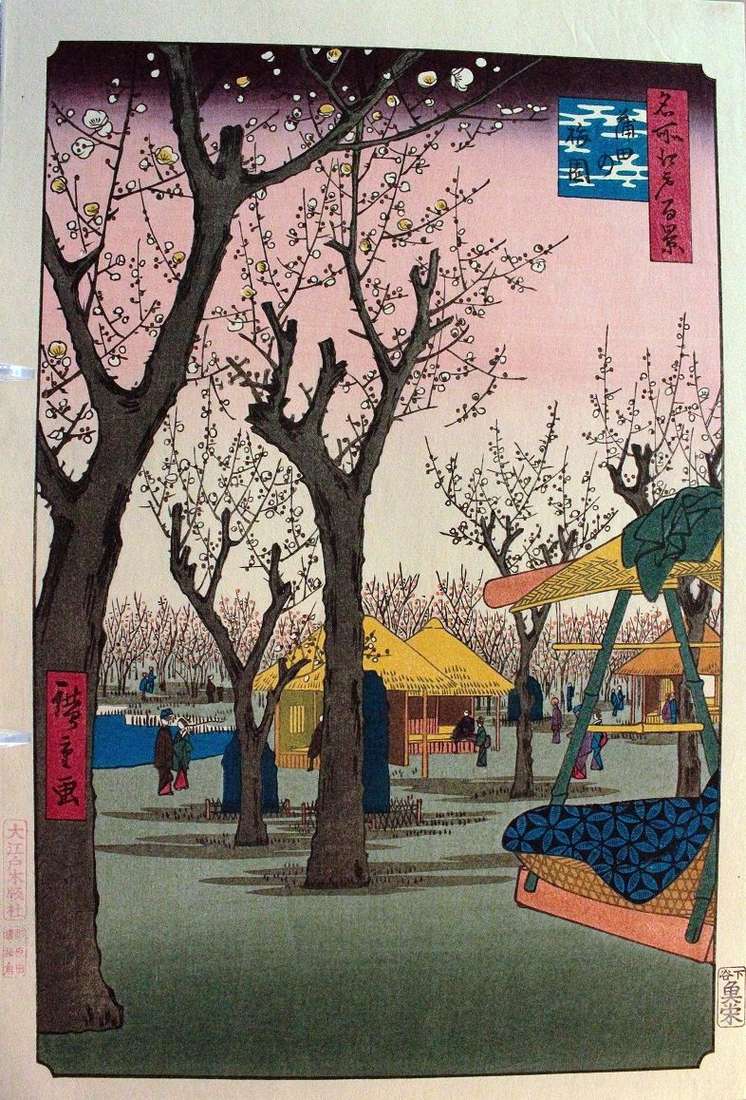
The area of Kamata – the southern outskirts of the capital – has been famous since ancient times for an abundance of plum trees. Plum orchard in Kamata was created during 1818-1830-ies and was named “Umeasika”. The refreshment plums were enjoyed in February. In May, they collected fruits for the preparation of various pickles, and in the first place pickled plums, a spicy seasoning for rice. But the main product that was obtained from the fruits of the plum was the medicine “vatyusan”, which was used to protect against sunstroke. Despite the fact that the garden belonged to Yamamoto Tyudza-Emo and was a private domain, the entrance to its territory was opened.
Gradually, there were tea houses, restaurants. Hiroshige depicts one of the tea houses on the shore of the pond. In the foreground of the engraving on the right is a part of the palanquin, as if suspended in the air. Such a comparison of the first and second plans is typical for this series. In addition, Hiroshige used the reception of the cut-off modeling, drawing a shadow under the trees of the plum. The changes made give a late composition a different sound. The color of the soil is changed by the trees. A clear transition from the green of the grass in the foreground to the yellow-green under the flowering trees. A square cartouche has acquired a white background.
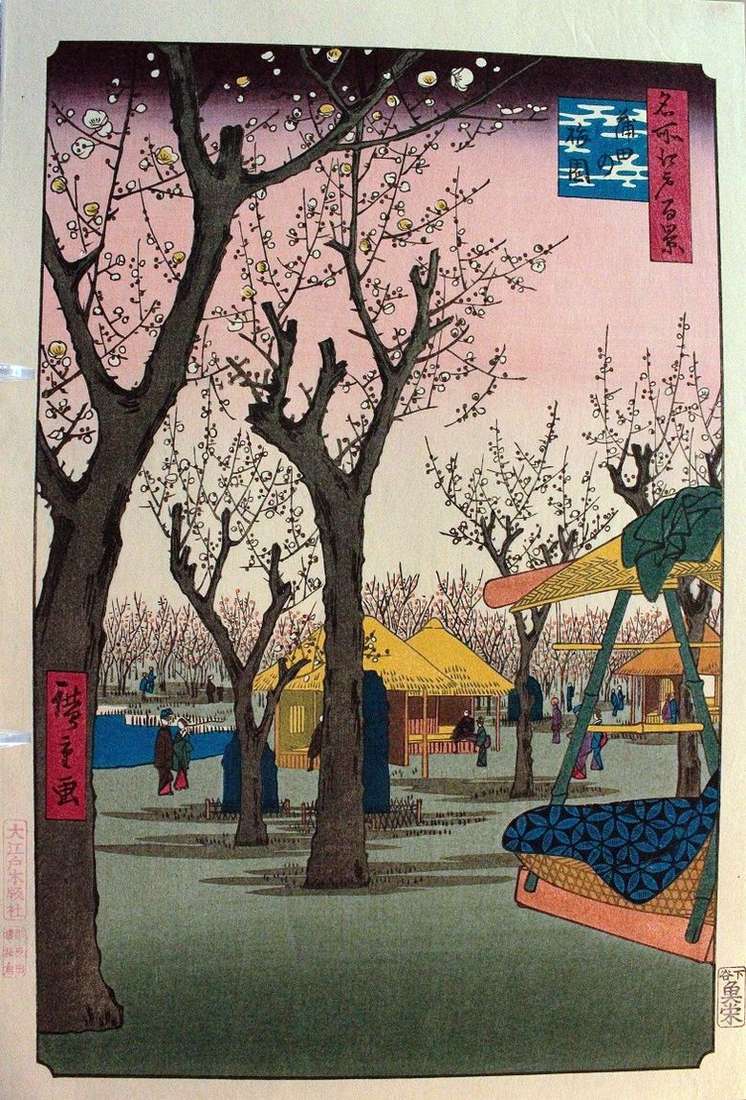 Plum Orchard en Kamata – Utagawa Hiroshige
Plum Orchard en Kamata – Utagawa Hiroshige Plum Orchard in Camideau by Utagawa Hiroshige
Plum Orchard in Camideau by Utagawa Hiroshige Plum Orchard in Camideau by Ando Hiroshige
Plum Orchard in Camideau by Ando Hiroshige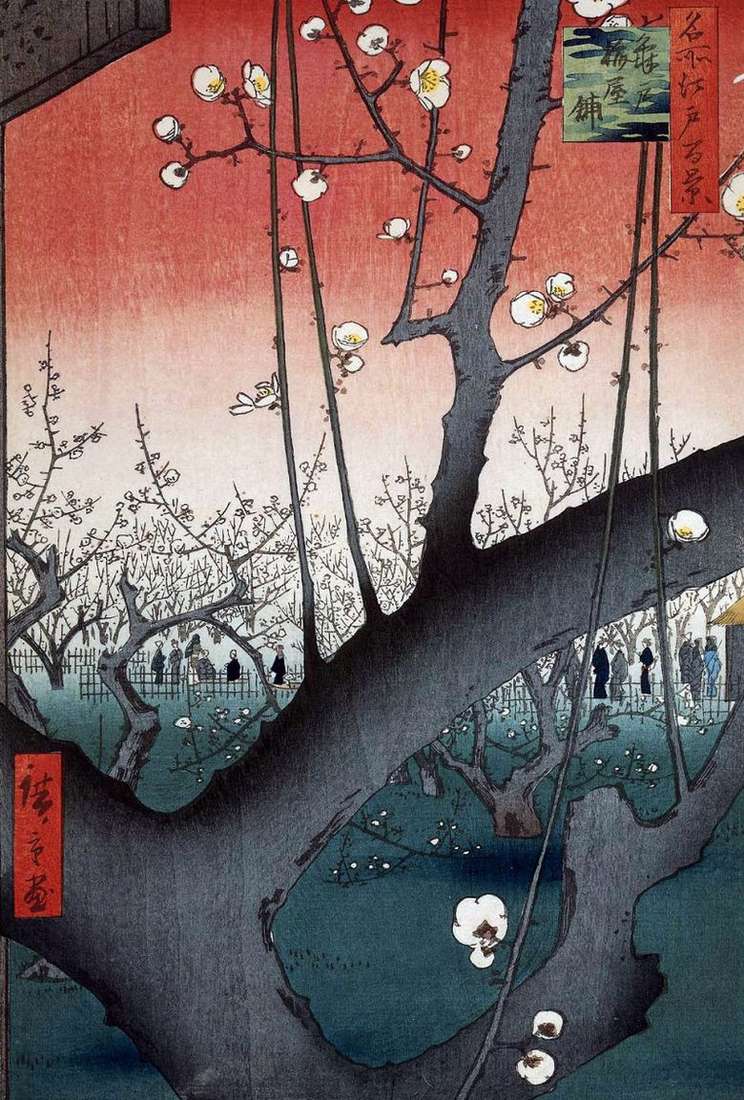 Kameydo Plum Orchard – Utagawa Hiroshige
Kameydo Plum Orchard – Utagawa Hiroshige Verger de pruniers de Kamata – Utagawa Hiroshige
Verger de pruniers de Kamata – Utagawa Hiroshige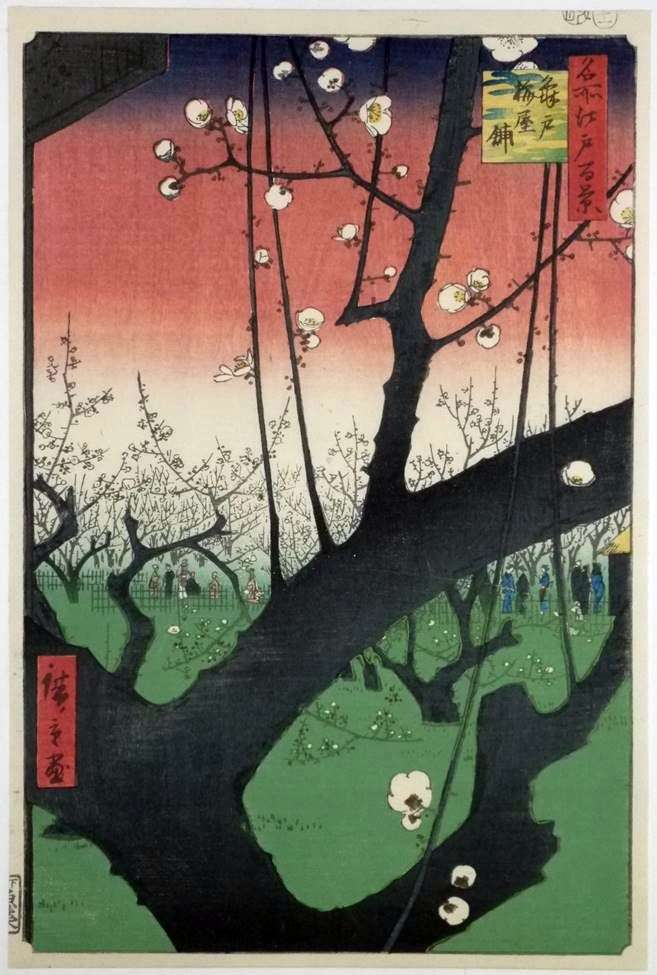 Kameydo Plum Orchard – Hiroshige
Kameydo Plum Orchard – Hiroshige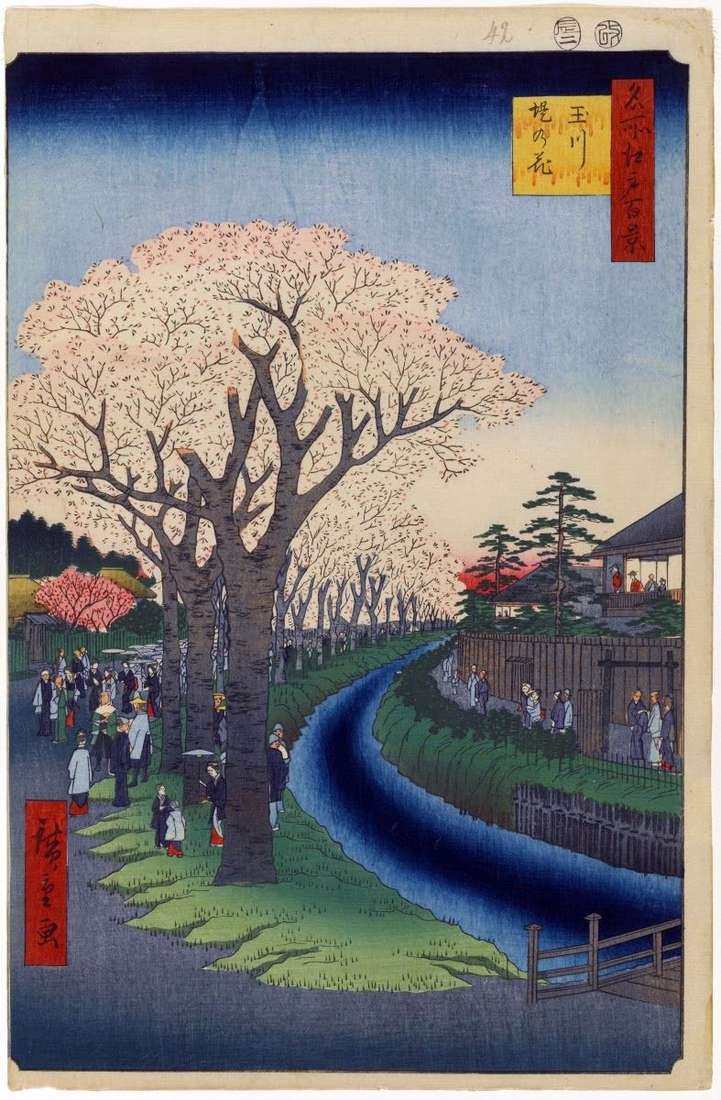 Sakura trees along the dam of the Tamagawa River by Utagawa Hiroshige
Sakura trees along the dam of the Tamagawa River by Utagawa Hiroshige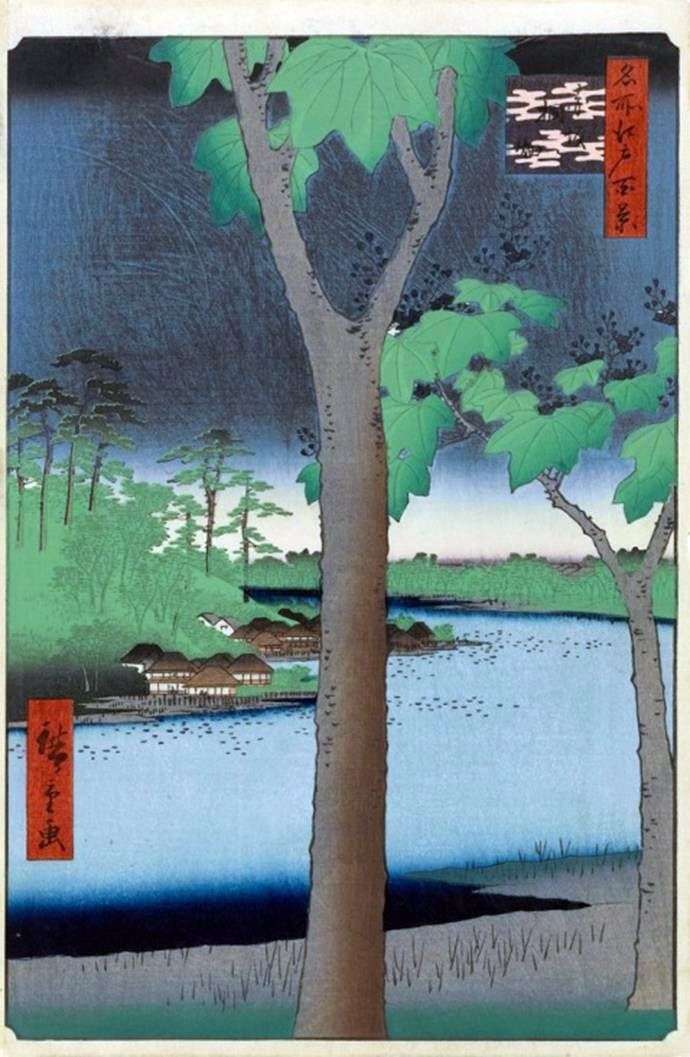 Akasaka, Pavlovny Plantation by Utagawa Hiroshige
Akasaka, Pavlovny Plantation by Utagawa Hiroshige